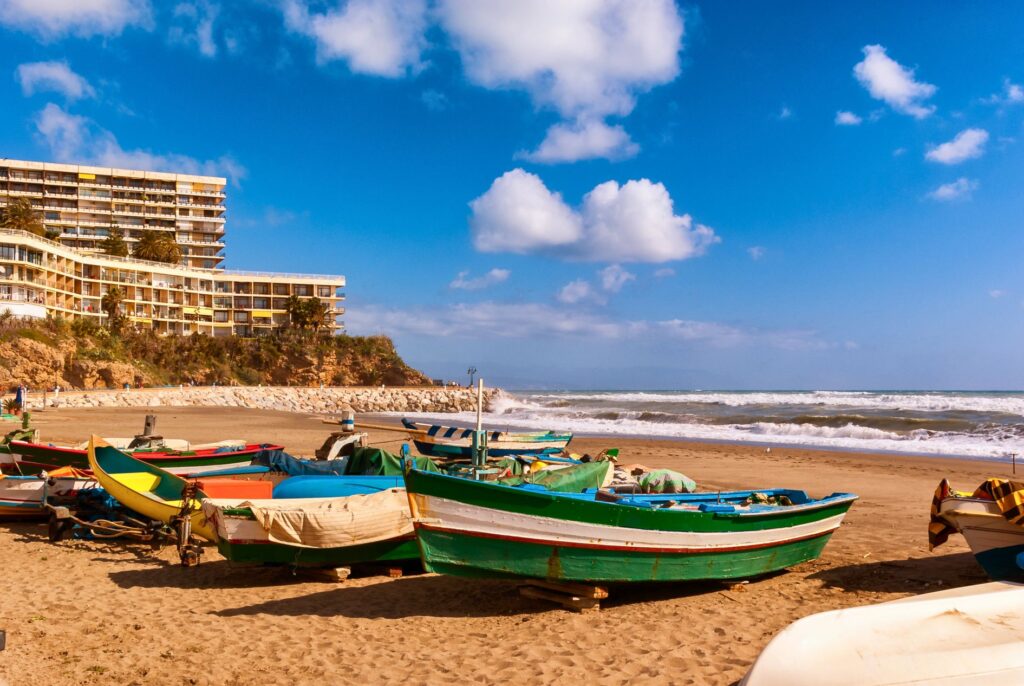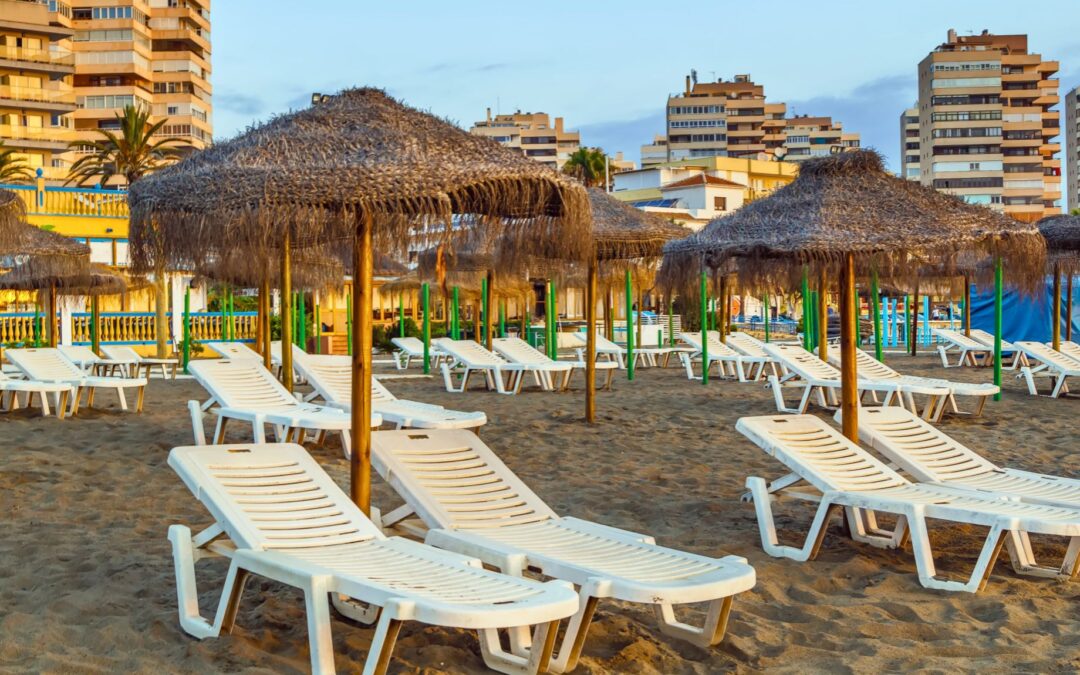A place for the sun. A place for the story. A place to stay.
Torremolinos was ground zero for Spain’s tourism boom. It was the first town in the country to develop specifically for international beach tourism, welcoming waves of British, German, and Scandinavian travelers in the 1950s, long before the Costa Brava or Ibiza caught on.
Torremolinos doesn’t announce itself. It just is. Sitting there on the Costa del Sol, confident in its coastline, unconcerned with reinvention. Other towns have rebranded, added gloss, called in consultants. Torremolinos? It simply let the tide come in and kept the door open.
And that door’s been open for quite some time. The town’s history is unusually democratic for the Mediterranean: bohemians and film stars in the '60s, drag queens and flamenco dancers, middle-class families from Birmingham, chefs from Buenos Aires, digital nomads from Berlin. It was Spain’s first modern beach town—at least in the way we now understand them. Accessible, social, sunlit. A place where you didn’t need to know someone to enjoy the view.
That ethos stuck. And for the modern buyer—people in their 40s, 50s, 60s, thinking about where they’d like to land next—it makes a quiet kind of sense.
From Fishermen to Frank Sinatra
The 1950s were good to Torremolinos. It became a symbol of something new: a Spain opening itself up. And not just to money, but to difference. Writers, artists, musicians came not only for the beaches but for the freedom. By the early '60s, Grace Kelly had passed through, Brigitte Bardot had a tan here, and Frank Sinatra got into a bar fight at Hotel Pez Espada. True story.
Then came the package holidays. The town grew quickly—too quickly for some—but the original spirit never quite disappeared. You can still find it in the chiringuitos that serve fish by weight, in the morning swimmers who’ve been at it since the Franco years, and in the tiled foyers of old apartment blocks built to last.
That’s the point. Torremolinos never pretended to be more than it is: a place for people who want sun, sea, and a sense of freedom. And now, with real estate ticking back up and wellness-minded buyers looking for longer-term living—not just a couple of weeks with the grandchildren—the town is having another moment.
What Buying Here Actually Looks Like
Let’s skip the brochure speak. There are three kinds of homes here, generally speaking.
First, the beachfront flats. Some old, some new, some in the sweet spot of both—modernised without losing the soul. These come with broad balconies, open kitchens, and the kind of living room that sees more light in a day than a London flat sees in a year. Great if you like walking straight from your morning coffee to the sea.
Then there are the Andalusian-style villas, set a little back from the centre, often with tiled courtyards, shaded terraces, and thick white walls built to keep the heat out. Families like these. So do writers and retirees who want quiet but still like being five minutes from the beach.And finally, you’ll find penthouses that don’t mess about—glass-wrapped, high up, and facing the sea. These tend to attract people who’ve already done the big city thing and are now more interested in sunsets than square footage. These homes often come with rooftop terraces, plunge pools, and views worth getting up early for.

In the early days, Torremolinos was still a small fishing village. You could see yachts moored near huts and luxury tourists dining feet away from working-class Andalusians. That surreal mix of glamour and grit gave the town its unique personality.
What the Life Actually Is
You don’t need to love golf, though there are courses nearby. You don’t have to know flamenco, but you’ll hear it at night. Torremolinos is not a lifestyle—it’s just life, done slightly better.
Take the food. You can eat well for €12 or you can spend €120. Go to Casa Juan Los Mellizos for seafood that tastes like it was caught three hours ago, or get a table at Tiki Restaurant on the Paseo Marítimo for sushi with a sea breeze. There’s a strong Argentine community here, too—if you want a steak, you’ll get a proper one.
There are festivals you didn’t plan for, and a surprisingly rich LGBTQ+ history—Torremolinos has long been a place where difference doesn’t need a spotlight to exist. It's just part of the town.
And when you’re not eating or talking to someone new, there are long walks. Along the promenade, up into the hills behind, or just from one café to the next. People here don’t rush. There’s space to think. Or not think. Both are fine.
Why This Place Works Now
It’s easy to look at the flashier parts of the Costa del Sol and get caught up in the show. But Torremolinos doesn’t need the show. It has the infrastructure. It has the airport (10 minutes). It has the doctors, the schools, the broadband, the beach.
It’s ideal for people who don’t need convincing. Who’ve lived enough to know that convenience, good food, and year-round sunshine are more meaningful than another marble countertop.
At ultimate-lifestyles.com, we work with buyers who want a property they can actually live in—not just pose in. Flats you can open all the windows in. Villas with gardens that smell like orange blossom. Homes where you’ll spend whole winters and not miss the cold once.
📌 Ready to make the move to somewhere that doesn’t try too hard?
See what’s available now in Torremolinos at ultimate-lifestyles.com. Or call us for a chat about what you’re looking for.
📧 E-mail: [email protected]
📞 Phone: +34 951 12 07 12
Because sunrises over the Med are still best watched from your own balcony—with your own kettle.

